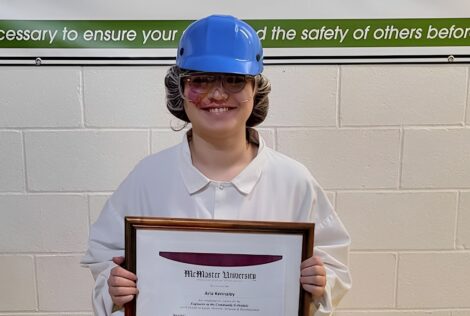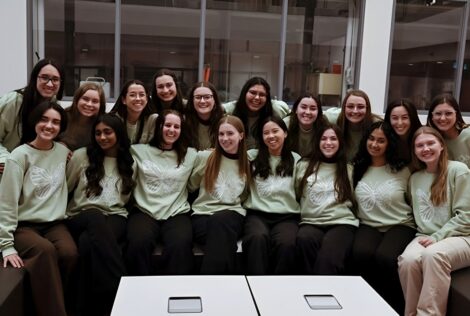
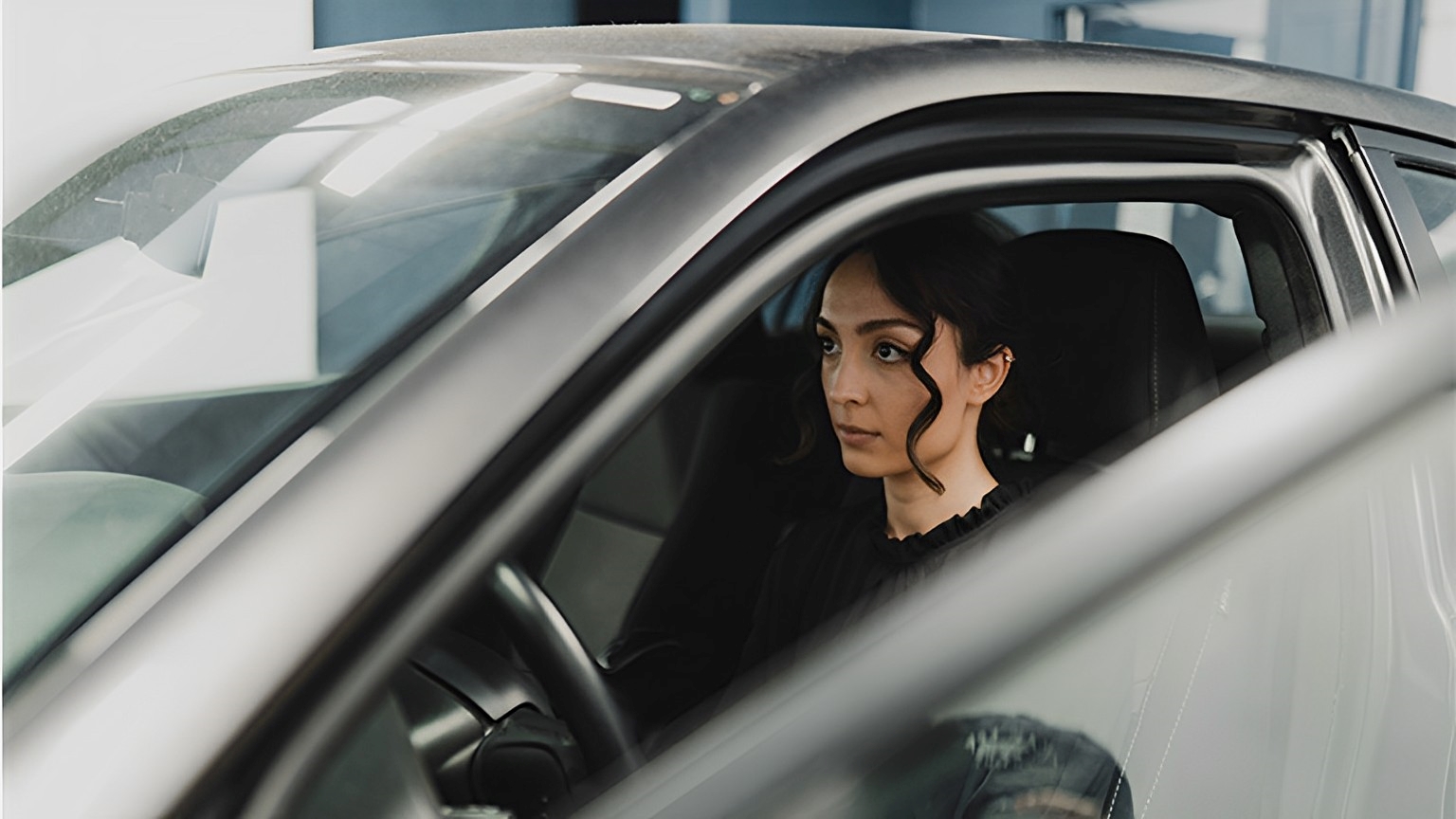
On International Women’s Day, learn about five women working toward a more inclusive future of mobility in the partnership between McMaster University and Cubic.
The Centre of Excellence for Artificial Intelligence and Smart Mobility is a partnership between Cubic Corporation’s Cubic Transportation Systems (CTS) business division and McMaster University.
The collaboration trains the next generation of diverse engineers working to solve real-world challenges at the McMaster Automotive Resource Centre with a focus on designing the future of inclusive mobility.
McMaster University’s Vera Pantelic, Maryam Alizadeh, Sarah Jumah, and Hanna Haponenko as well as Cubic’s Kathy Amell reflect on the ways they’re contributing to smarter, more accessible and sustainable innovation.
More on the Centre of Excellence.
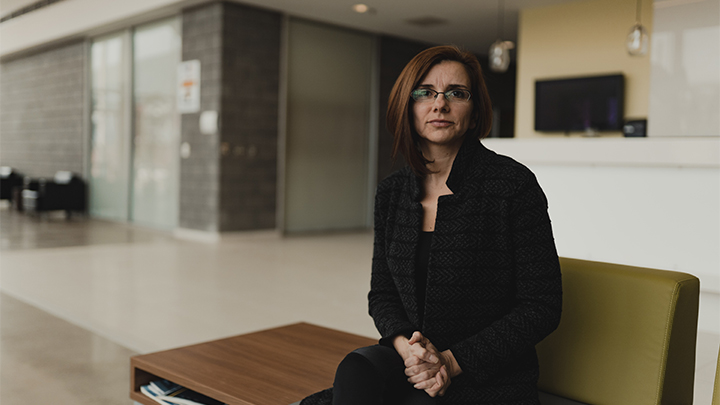
Vera Pantelic
“That’s why I value these industrial collaborations. Students get to work with experts on both aisles – academic and industry. They get to work on real, complex production-scale problems, and they get to try out innovative ways to solve them.”
As a leader, Vera Pantelic finds power in the transformational magic of providing opportunities.
It’s been nearly 20 years since Pantelic came to McMaster University from Serbia, when she committed to a master’s program that grew into a PhD and career at McMaster.
She’s a Senior Principal Research Engineer at the world-renowned McMaster Centre for Software Certification and McMaster Automotive Resource Centre, and an Adjunct Assistant Professor at the Department of Computing and Software.
The Centre of Excellence is not only an occasion to shape the future of mobility, she said, but to build the competent, independent, and self-confident “workforce of the future.”
Pantelic thrives in helping students get hands-on experience using the latest technologies as they research world-leading problems such as traffic congestion and environmental pollution.
It’s amazing to witness the progression in confidence, she said, as she assists budding engineers invent, design, and implement software tools, methods and end systems.
“I believe it’s the most rewarding part of my work,” she said. “You see this growth from junior years to competent and independent engineers.”
At the Centre of Excellence, her leadership extends over an array of technical areas — performance analysis, cloud computing, software architecture and testing, model-based development and simulation, and machine learning – as well as communication with Cubic.
She explained that a key learning opportunity ingrained in the collaboration is for students to understand that the crux of engineering goes beyond “math and science” – it relies on communication and teamwork too.
It’s this mixture, she says, that leads engineers to success in benefiting society as they solve some of the world’s largest challenges.
“You learn about what engineering is really about.”
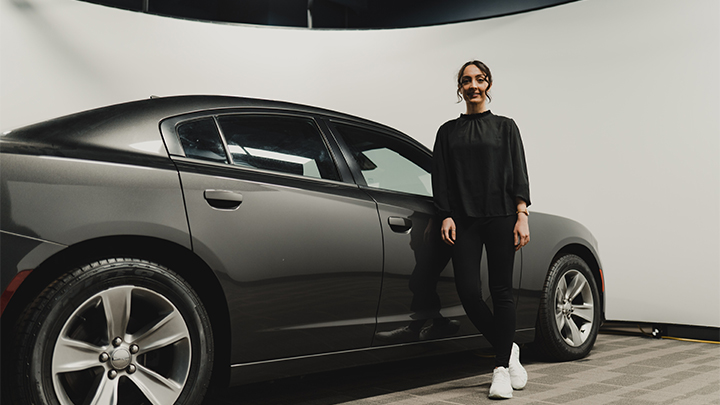
Maryam Alizadeh
“Following your passion is very important. If you believe something is important, put the effort towards it; make a plan, find the resources, talk to experts and one way or another you will achieve what you want.”
Maryam Alizadeh, PhD student in mechanical engineering, is guided by a desire for a greener world. Born in Iran, she developed an interest in vehicles and a passion for the environment; she dreamed about designing a car that doesn’t exhaust CO2 in order to preserve the ozone layer.
This fascination led her to graduate school at McMaster University, where she currently studies with Ali Emadi, Canada Research Chair in Transportation Electrification and Smart Mobility.
While previous research during her master’s focused on thermal management of battery electric vehicles, her ongoing PhD research concentrates on implementing artificial intelligence and machine learning in energy management of cars and smart cities inclusion.
“I got my dream job,” she said.
Alizadeh’s long-standing interest in sustainability is at the core of the partnership between McMaster and Cubic. It’s a significant opportunity, she said, for students to innovate with hands-on experience from Cubic.
“Together, we can provide solutions to the problems of inclusion and accessibility, moving towards more efficient transportation and a safer city,” she said.
Alizadeh, the machine vision team lead at the Centre of Excellence, aims to craft an environment that welcomes and values the voice of each team member. She knows how small ideas can grow into spectacular innovations.
The “beauty of this collaboration,” she said, is the intersection of experts from different academic, geographical, and cultural backgrounds. She notes that women make up half of her team.
This collaboration pushes us to think outside of the box. I believe this enhances our way of thinking and collaborating as engineers…it brings more innovation and so many unique solutions.
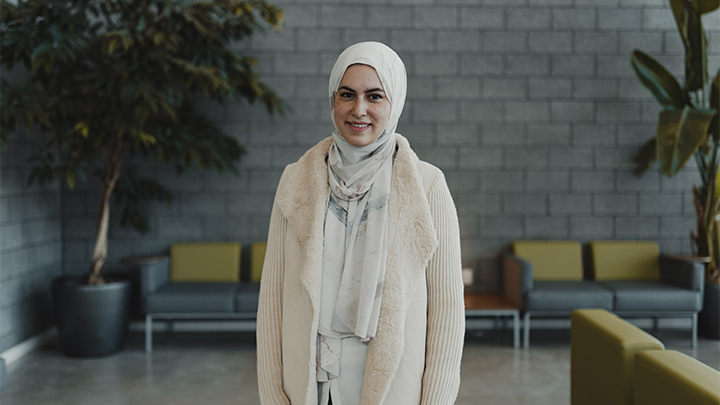
Sarah Jumah
“What I’ve learned through my engineering path is that it always seems too hard until you actually do it. Until you actually just get your hands dirty and start.”
Sarah Jumah, master’s student in electrical and computer engineering, has a firm belief that artificial intelligence can make the world a safer place.
As she works on smart sensors and machine vision at the Centre of Excellence, she’s hooked on the idea of going beyond the theoretical and implementing change in the real world.
As cliché as it sounds, artificial intelligence is the future…there are no doubts anymore. We are trying to implement AI in an attempt to make transportation safer, more accessible and more reliable for all of us.
While Jumah comes from a background of mechatronics, she’s enamoured with her deep dive into the world of software.
She’s currently working on capturing and identifying illegal maneuvers in traffic, such as disallowed turns and improper vehicle takeovers. Capturing vehicle information and transferring it to law enforcement for review, she says, is a more efficient way of protecting people from dangerous choices drivers make when human enforcement is not around.
Along with her passion, Jumah explains that her teammates help light the fire that energizes her to approach her work each day. She stressed the incredible support and necessity of diverse perspectives coming to the table.
The women on the team, she says, deliver “stunning” work that inspires her own career journey.
“That’s why it’s an experience in itself,” she said of the partnership. “A very important part of the team is the fact that we’re very diverse in our backgrounds in our experience. So now we kind of complete each other.”
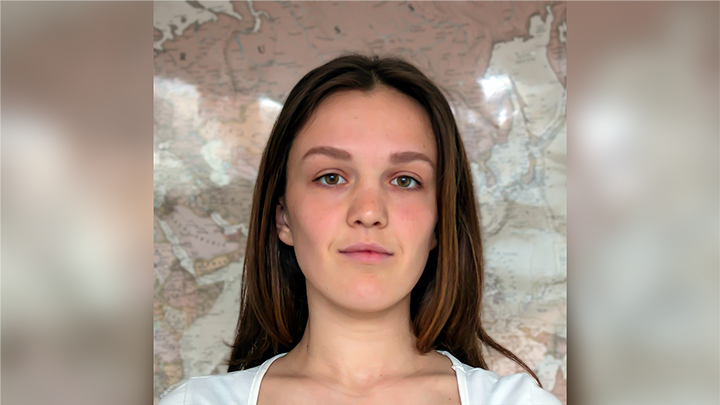
Hanna Haponenko
“Want to be a part of the future? Start building in the present. Got an idea? Reach out. I’m always up for a chat.”
When Hanna Haponenko pictures a roadway, she envisions fewer cars, more people using public transit, and office buildings converted into community spaces. Augmented reality (AR) and virtual reality (VR), she said, are part of the puzzle to getting there.
Haponenko is completing her PhD in human cognition and perception in psychology, neuroscience, and behaviour, and transitioning to mechanical engineering as a post-doctoral researcher at the McMaster Automotive Resource Centre. She also runs a start-up, Axcessiom, which develops facial gesture recognition technology for drivers with accessibility needs.
At the Centre of Excellence, she leads discovery and development of VR and AR solutions for the multi-modal traveler.
“No more feeling frustrated using your phone and turning back and forth between countless web pages while navigating and exploring a new city. No more feeling exasperated navigating large buildings with multiple accessways, stairs, or elevators in crowded environments,” she said.
“Mobility will be more seamless, human-centred, and connected.”
Haponenko was drawn to the Centre of Excellence not only due to its potential for growth, but ability to significantly reduce people’s carbon footprint.
The overall goal, Haponenko explained, will be to reduce inefficiencies for how travelers navigate the world. She’s exploring ways to design the environment with interactive VR/AR displays, connected devices, and personalized travel journeys.
VR-supported remote work, AR-supported ride-sharing combined with public transit to and from the workplace, and smart city infrastructure can all make this magnitude of data transmission possible, she said.
Bolstered by this motivation to create change, Haponenko says she’s thrilled to be working alongside strong, intelligent women at the Centre of Excellence and wants to see more women in leadership positions.
“This will take time, but more importantly, it will take more women raising their hands, taking risks, and not being afraid to be ambitious.”
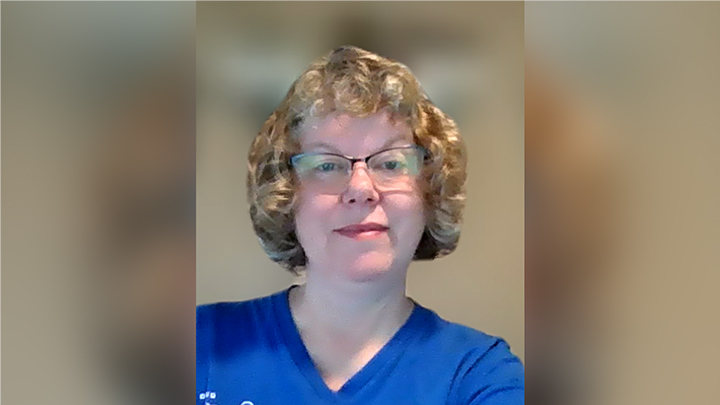
Cubic Partner: Kathy Amell
“I think it’s a noble goal. Why just get by when you can make it better?”
As Kathy Amell works to bring accessibility into everyday design, she’s filled with excitement surrounding how partnering with McMaster University can strengthen the conversation.
As a Scrum Master with Cubic, leader of their UX/UI design team and Cubic’s first CPACC (Certified Professional in Accessibility Core Competencies), she wants to “smooth the path” to accessibility by ensuring it’s integrated into design at every point in the process: not as an afterthought.
What barriers in workflows need to be addressed? What universal design in public transportation can be developed to be more functional for the world at large?
Amell says that a change in thinking to prioritize the user experience will drive necessary attention toward eliminating the barriers.
“When you think about what it is that the user needs and understand that problem, that’s when the shift happens. Whether that user has a disability deepens your understanding,” she said.
Amell comes to the partnership not only as a project manager with a background in game art and design, but also with experience as a nurse. Her career of caretaking spanned over three decades.
While Amell says she felt “pigeonholed” into nursing – and though it fostered a passion in helping those who need support, in particular in maternity services – she’s pleased to see a shift in opportunities for women in STEM fields.
“Don’t take no for an answer,” she said. “If you have an idea, and you have a passion, hang on to it with both hands and don’t let anybody take that away from you. Ask for the opportunities that you want. It’s too easy to be intimidated.”
Merging teams with McMaster University to achieve a common goal and positive change in transit work, she said, capitalizes on an “infusion of energy” between researchers and students who are motivated to collectively embrace and share ideas with Cubic in the pursuit of innovation.
“I just can’t wait to see what happens.”


